Just last week the team at nuCloud was discussing how maps in video games have had such a big impact on our obsession with interactive maps and mapping. Digging a little deeper I was fascinated by what maps I remembered in games and what little content there is out there on this subject. Maps in video games have been a critical element since the beginning and today are a critical element in so many large open world games. I wanted to quickly hit on a few video game maps that stood out to me and their impact on video games and honestly the mapping industry.
Doom
First Person Shooters (FPS) remains a huge category of video games to this day with games like Fortnite experiencing amazing viral success, but I think we can all agree that Doom is one of the most significant and influential titles in the genre. Battles in FPS games to this day take place on “maps”. Besides being really the first memorable FPS, Doom was also one of the first memorable maps. The game made it really easy to toggle back in forth between the first person view and the map. Unlike almost every other video game map though this doesn’t pause the game. So while you are trying to get your bearings on the map and figure out what to do next, bad guys are wasting no time to find and kill you. Games have since tried to merge the “live” experience by putting the map smaller in a corner or transparent on the screen so you can still see the action, Diablo was a great early example of this. This unique experience of running around looking at a map and not what is in front of you made Doom a unique and terrifying experience worth trying out even today!
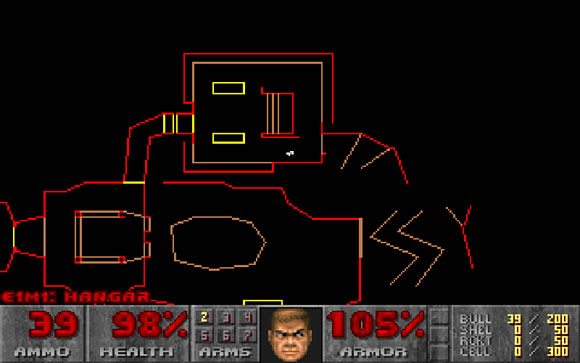
A Typical Doom Map
Nintendo Game Maps
You can’t separate out my childhood without mentioning the Nintendo Entertainment System (NES). I also believe it was in this time period that many of the frameworks and standards that we see continue to be expanded upon in video games today were started. So it’s with that lense that when I think back to those days three games stand out for their maps.
1) The Legend of Zelda was one of the earliest NES games, to my knowledge, to introduce a map. Not only did you have this 128 “box” overworld map in the top left-hand corner, but individual dungeons had their own map. You even had to find the map and compass in each dungeon to see what the “floorplan” looked like and where you were in the dungeon.
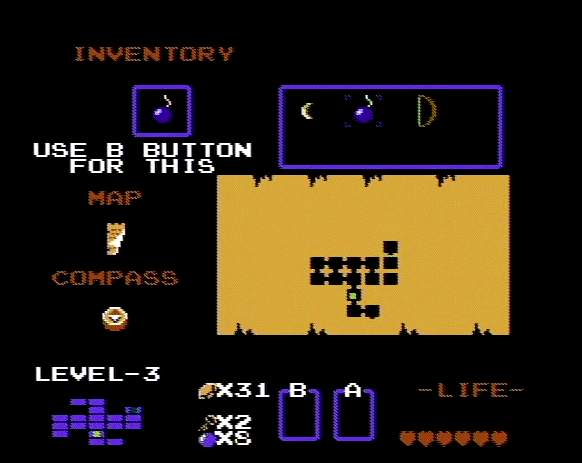
Level 3. Still looking for the raft.
2) It feels like every entry in the Final Fantasy series pushed the envelope creating larger worlds to explore, but it all started with the first one. Not only did the game come with a physical map of the world, but in one of the earlier locations in the game, a broom gives you a secret on how to access this map in the game. Does “TCELES B HSUP” mean anything to you?
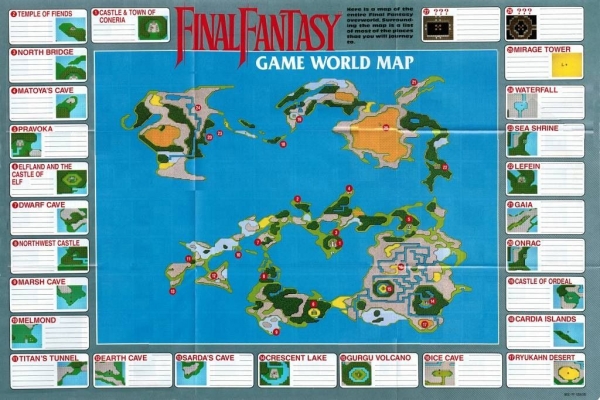
The Final Fantasy print map was included in every box.
3) Finally, Super Mario Brothers 3 was the first game in this long series to introduce the overview world maps. I’m sure everyone remembers the first time they played this game and were brought into world 1 where they had to move to the first stage? I still love coming back to this game from time to time and when you are teleported into the first world map it’s a very satisfying experience.
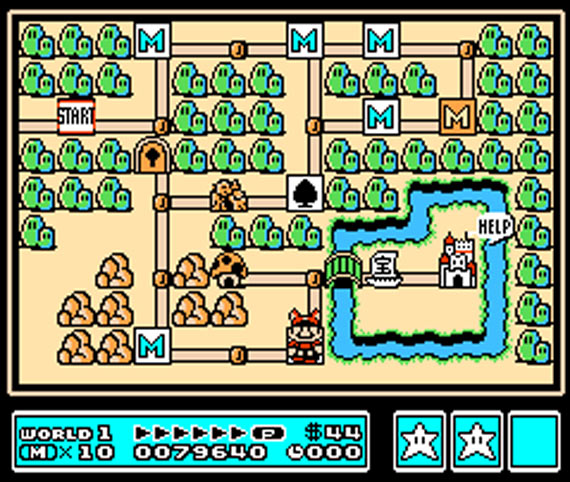
Also completed World 1!
Metroid Maps
Unlike the NES entry in the series mentioned above, the first Metroid game to introduce the “minimap” was Super Metroid. The Metroid series would continue to expand upon the map feature throughout its storied collection of future games. This minimap would also go on to influence generations of games to come. The idea that it would display what you have explored so that you could also see where you haven’t been was kind of revolutionary at the time. I personally believe it was really the addition of this map that created the whole genre of “Metroidvania” games still created and loved today.
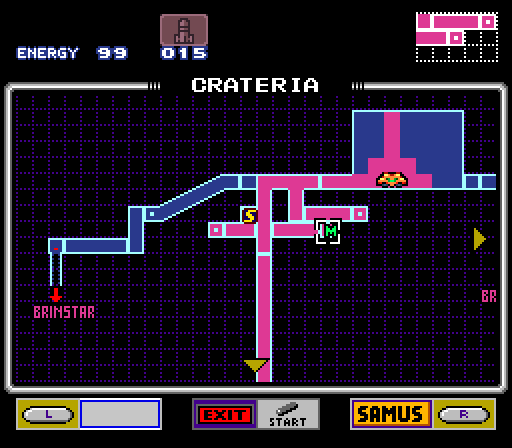
The game map that revolutionized mapping in gaming!
Grand Theft Auto Maps
As revolutionary as Doom was for FPS games, it’s hard to think of a more revolutionary game in defining the “open world design” than Grand Theft Auto (GTA). The world map of Liberty City was huge at the time and it felt like you could practically do anything. Each future game grew in size. The 2004 entry Grand Theft Auto: San Andreas was the first to basically give us a whole state to explore.
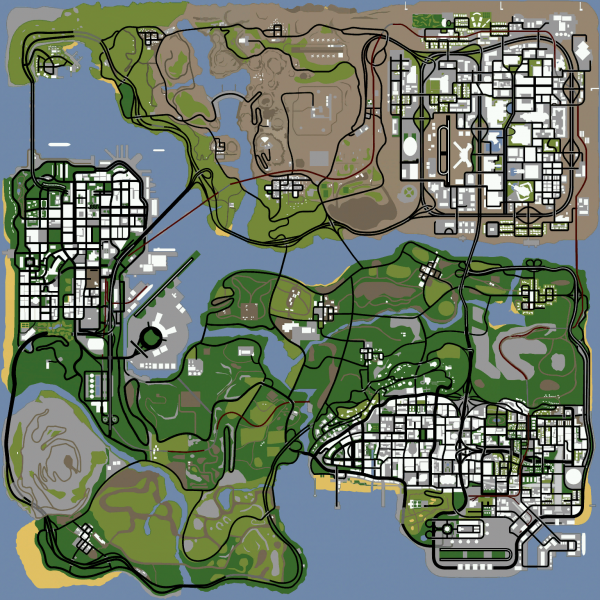
The entire “state” of Grand Theft Auto: San Andrea with three unique cities!
The ability to turn on and off layers of things to see and do on these maps was also extremely helpful.
Super Big Open World Maps
We’ve kind of lead into this but I don’t really know how you could play or experience a modern Open World game without a map. Things like the GTA games, large role-playing games (RPGs) like modern Final Fantasy games, Elder Scrolls games, Fallout and even massively multiplayer online role-playing games (MMORPGs) like World of Warcraft or Star Wars: The Old Republic are all made possible through maps. It’s such a critical and defined communication method that makes these larger and larger explorable worlds possible.
One of the wildest things we’ve seen in recent years is the growing size of open world platformer maps. To truly understand the size and scale of some of these maps and the world the creators built take a look at this video.
This video is from 2016 so just imagine how big Minecraft could be today!?
Conclusion
All this has been a very quick and brief look at some distinct moments of video game maps. You could easily write volumes about this subject. Maybe it will be something we come back and tackle deeper at a later date? Hopefully, any gamers reading have enjoyed this quick journey down memory lane?
What are some of your favorite and most revolutionary experiences with maps in video games?
Want to go deeper into video game maps here are a couple of great resources.
